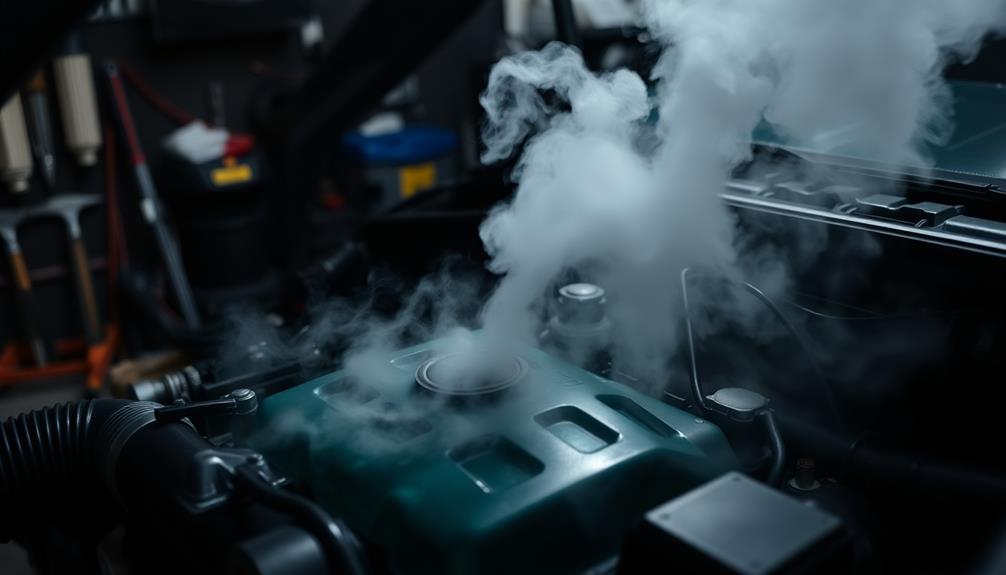If your dog has seborrhea, you might notice a strong, unpleasant smell that often resembles rancid popcorn or old cooking oil. This odor comes from the overproduction of oil, which creates an environment for bacteria and yeast to thrive, leading to that musty scent. With the condition, the smell can get worse due to inflammation or secondary infections, making it a key sign to watch for. Regular grooming and medicated shampoos can help manage the odor and keep your pup's skin healthier. Keep an eye on your furry friend, and there's more to explore about the best care for them soon!
Key Takeaways
- Seborrhea in dogs produces a distinct, unpleasant odor often described as rancid or musty.
- The smell resembles rancid popcorn or old cooking oil, intensifying with inflammation.
- Odors arise from excess sebum, creating an environment for bacteria and yeast.
- Accumulation of dead skin cells contributes to the strong, unpleasant smell.
- Secondary infections can worsen the odor and overall discomfort for the dog.
Introduction

When it comes to our furry friends, you might notice an unusual smell that signals a potential issue: seborrhea. This condition can cause your dog's skin to become oily or flaky, leading to an odor that's hard to ignore. You may find yourself wondering what's going on with your pup, especially if they're usually fresh and clean.
Seborrhea can be caused by various issues, including allergies, infections, or hormonal imbalances. When you notice that funky smell, it's a sign that something mightn't be quite right. Your dog could be feeling uncomfortable, and that's not something you want for your best friend.
Paying attention to the smell and any changes in your dog's behavior will help you catch any problems early. If you see excessive scratching, redness, or greasy fur, it's time to take action.
You'll want to consult your vet, who can provide the right diagnosis and treatment. Understanding seborrhea is the first step toward helping your furry companion feel better and return to their happy, tail-wagging self.
Description of the Smell
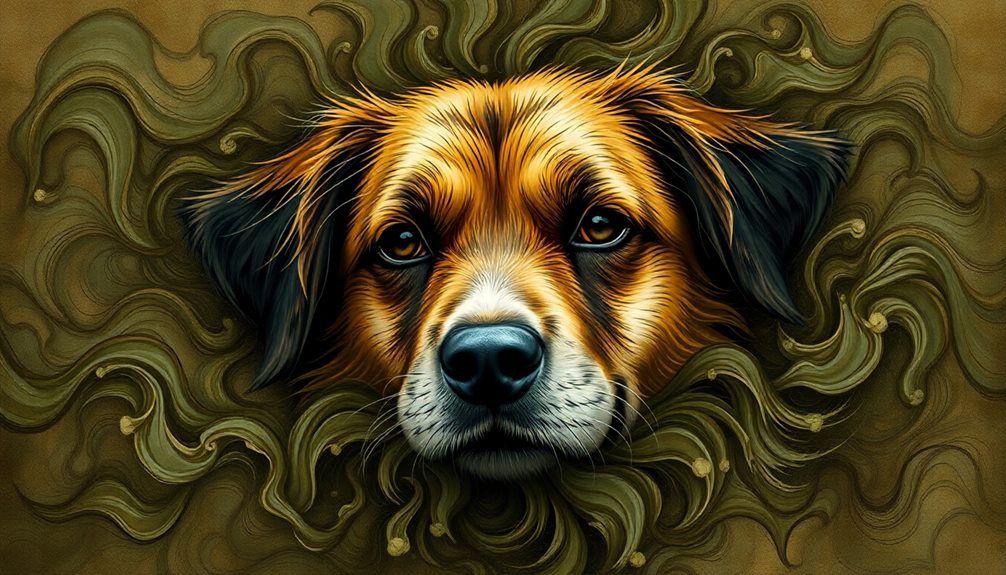
Seborrhea often produces a distinct smell that can be quite unpleasant. You might notice a strong, oily scent that clings to your dog's fur, almost like rancid popcorn or old cooking oil. It's not the kind of smell that makes you want to cuddle up with your furry friend! Instead, it can be overpowering, making you wrinkle your nose and want to keep your distance.
When your dog has seborrhea, the odor can intensify, especially if their skin is inflamed or infected. You may even catch a whiff of a musty or sour aroma, which can be alarming. This smell often signals that your dog needs some extra care, and it's important to pay attention to it.
Imagine walking into a room and being greeted by your dog's unmistakable scent. It's like a wake-up call, reminding you to check in on their health. While it mightn't be pleasant, recognizing this smell is a crucial step in ensuring your dog feels their best.
If you notice this odor, it could be time to consult your vet for guidance and treatment options. Your dog deserves to feel and smell great!
Source and Composition
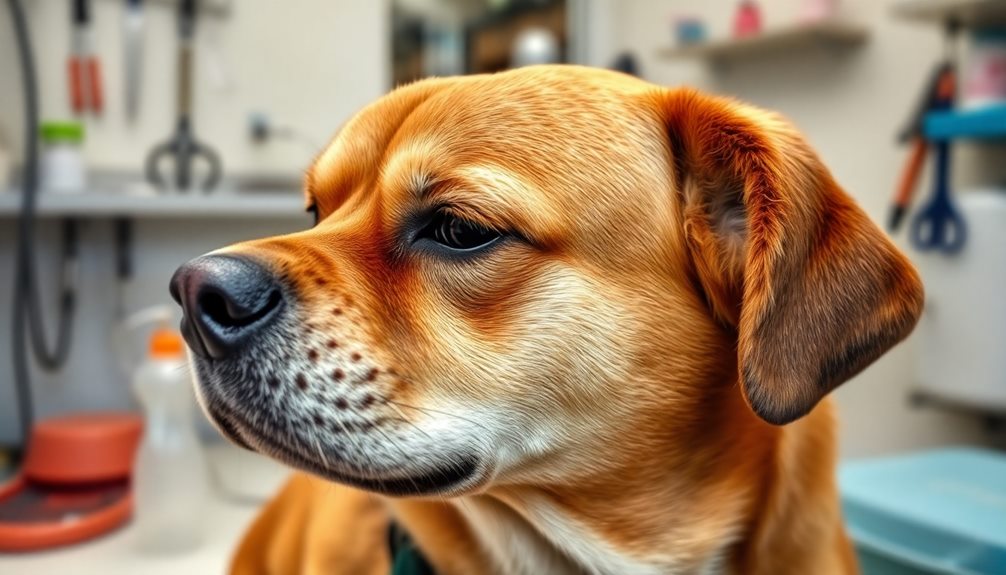
The source of the unpleasant smell associated with seborrhea in dogs primarily comes from an overproduction of sebum, the natural oil produced by their skin.
When your dog's skin produces too much sebum, it can lead to a greasy or waxy buildup. This buildup creates a cozy environment for bacteria and yeast, which thrive on the excess oil. As these microorganisms multiply, they can produce byproducts that give off strong, unpleasant odors.
To put it simply, the smell you notice isn't just the oil itself; it's also the result of these unwanted visitors having a party on your dog's skin!
The composition of this oily substance includes triglycerides, fatty acids, and other lipids. When combined with the debris from dead skin cells and dirt, it becomes a perfect breeding ground for odor-causing agents.
If you've ever caught a whiff of that musty, rancid scent, you know just how challenging it can be.
Regular grooming and proper skincare can help manage the sebum production, keeping your dog smelling fresh and clean.
Typical Scenarios or Environments

Dogs with seborrhea often find themselves in environments that exacerbate their condition. For instance, if your dog loves to play at the park, the dirt and dust can irritate their skin. Humid weather can also make things worse. The moisture in the air creates a perfect breeding ground for bacteria and yeast, which can worsen the smell associated with seborrhea.
You might notice that your dog's seborrhea flares up after a trip to the beach. Saltwater and sand can irritate their skin, leading to more oil production and a stronger scent.
Inside your home, factors like a warm, stuffy environment or being around other pets can intensify the issue too.
Regular grooming can help manage the situation. Brushing your dog's coat can remove debris and distribute natural oils evenly, reducing odor.
Make sure to choose the right shampoo during bath time; medicated options can target seborrhea effectively.
Pay attention to your dog's surroundings and routines. Small changes in their environment can lead to big improvements in their comfort and smell.
Emotional or Cultural Associations
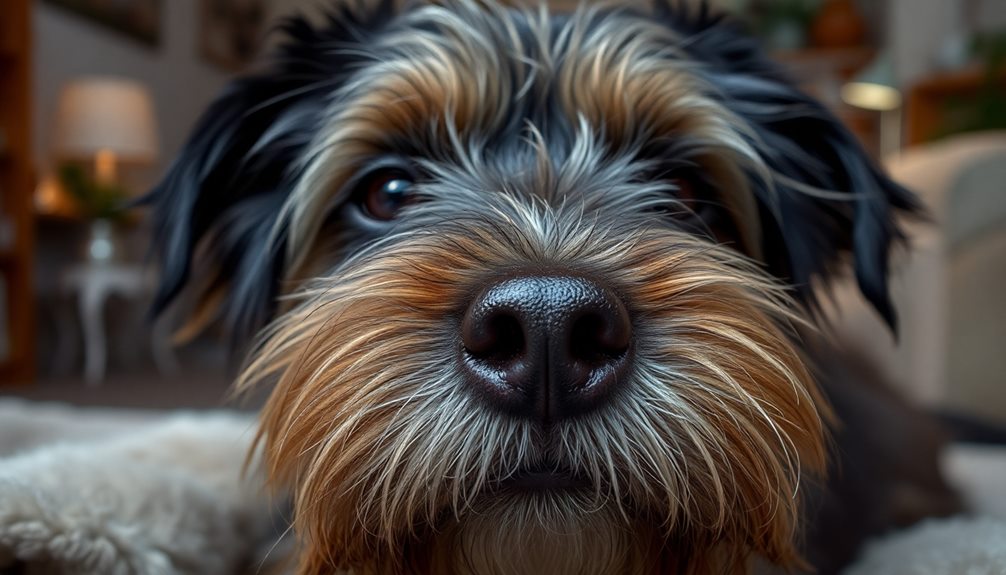
Managing seborrhea in your pet can evoke a range of emotions, from frustration to concern about their well-being. You might feel overwhelmed when you notice that distinct smell, which can be a reminder of your dog's discomfort. This scent often brings thoughts of worry, making you wonder if you're doing enough to help your furry friend.
It's common to feel a deep emotional connection to your pet, and seeing them struggle can tug at your heartstrings. Culturally, pets hold a significant place in our lives, often seen as family members. This perception can heighten your feelings as you navigate the challenges of seborrhea.
The smell may remind you of past experiences, whether it's caring for another dog or a childhood pet that faced health issues. Your efforts to manage seborrhea reflect your love and commitment to your dog's health.
You're not alone in this journey; many pet owners share similar experiences. By understanding these emotional and cultural associations, you can approach seborrhea management with compassion, not just for your pet, but for yourself too.
You're doing your best, and that's what truly matters!
Health or Safety Considerations
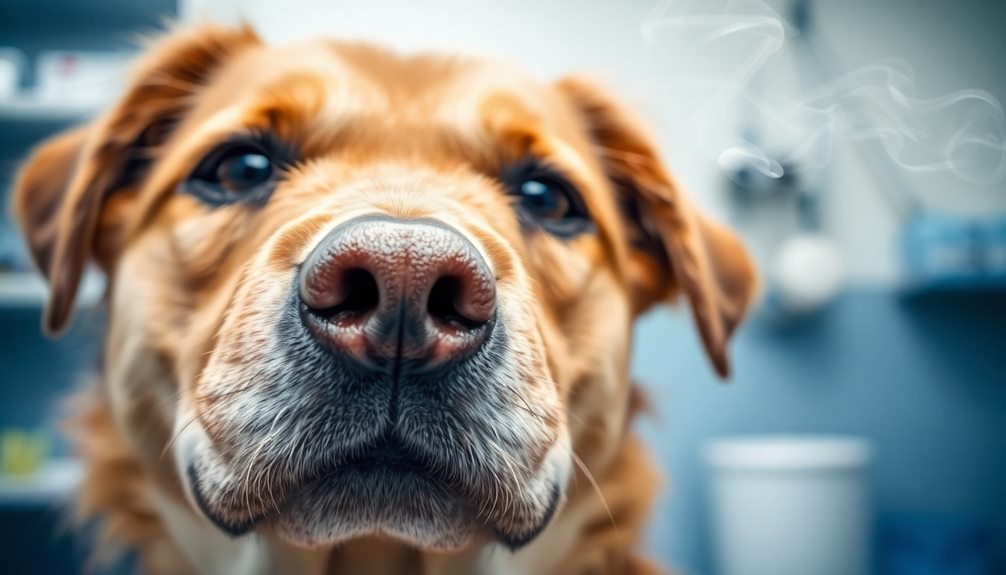
When dealing with seborrhea in your dog, it's crucial to stay alert to any potential health risks. This skin condition can lead to more serious problems if not addressed promptly. You might notice an unpleasant odor, which often indicates an underlying infection.
Keep an eye out for any redness, swelling, or excessive scratching, as these could signal that your pup is uncomfortable. Additionally, ensuring your dog has a balanced diet is essential, as certain best dog food for allergies can help improve skin health.
Regular grooming is essential! Brushing your dog's coat helps prevent matting and removes excess oil and dead skin. Make sure to use a gentle shampoo specifically designed for dogs with seborrhea, as this can soothe the skin and reduce that notorious smell.
Also, consider your dog's diet. A balanced diet rich in omega fatty acids can improve skin health from the inside out.
If you notice any changes in your dog's behavior, like increased lethargy or decreased appetite, it's time to consult your vet. They can provide guidance and decide if further testing is needed.
Final Thoughts

Addressing seborrhea in your dog can feel overwhelming, but staying proactive makes a significant difference. Recognizing the signs early is key to helping your furry friend. If you notice a bad smell, flaky skin, or excessive itching, it's essential to consult your vet. They'll guide you through the best treatment options tailored to your dog's needs.
You might be surprised to learn that regular bathing with medicated shampoos can help reduce the unpleasant odor and keep your dog comfortable. Additionally, maintaining a healthy diet rich in omega fatty acids can improve skin health. Small changes in your dog's routine can have a big impact.
Remember, you're not alone in this! Many dog owners face similar challenges and finding support from fellow pet parents can be comforting. Don't hesitate to share your experiences or ask questions in local pet communities or online forums.
In the end, your dog's health and happiness are worth the effort. With patience and care, you can manage seborrhea effectively. Embrace the journey, and you'll see your dog thrive, free from discomfort and that pesky smell!
Frequently Asked Questions
Can Seborrhea Be Contagious Between Dogs?
Seborrhea isn't contagious between dogs. It's usually caused by underlying issues like allergies or skin infections. If you notice symptoms, it's best to consult your vet for proper diagnosis and treatment for your furry friend.
How Can I Prevent Seborrhea in My Dog?
To prevent seborrhea in your dog, maintain a regular grooming routine, feed a balanced diet, and ensure they're hydrated. Regular vet check-ups can help catch any skin issues early, keeping your dog healthy and comfortable.
Are Certain Dog Breeds More Prone to Seborrhea?
Yes, certain dog breeds are more prone to seborrhea, especially those with oily skin or thick fur. Breeds like Cocker Spaniels and Basset Hounds often face this issue, so regular grooming's essential for prevention.
What Treatments Are Effective for Dog Seborrhea?
To effectively treat dog seborrhea, you'll want to use medicated shampoos, topical treatments, and possibly dietary changes. Regular grooming also helps manage symptoms, so stay consistent with your dog's care routine for optimal results.
Is Seborrhea Related to Other Skin Conditions in Dogs?
Yes, seborrhea can be related to other skin conditions in dogs. It often coexists with allergies, infections, or hormonal imbalances. You should consult your vet for a comprehensive diagnosis and appropriate treatment options.





